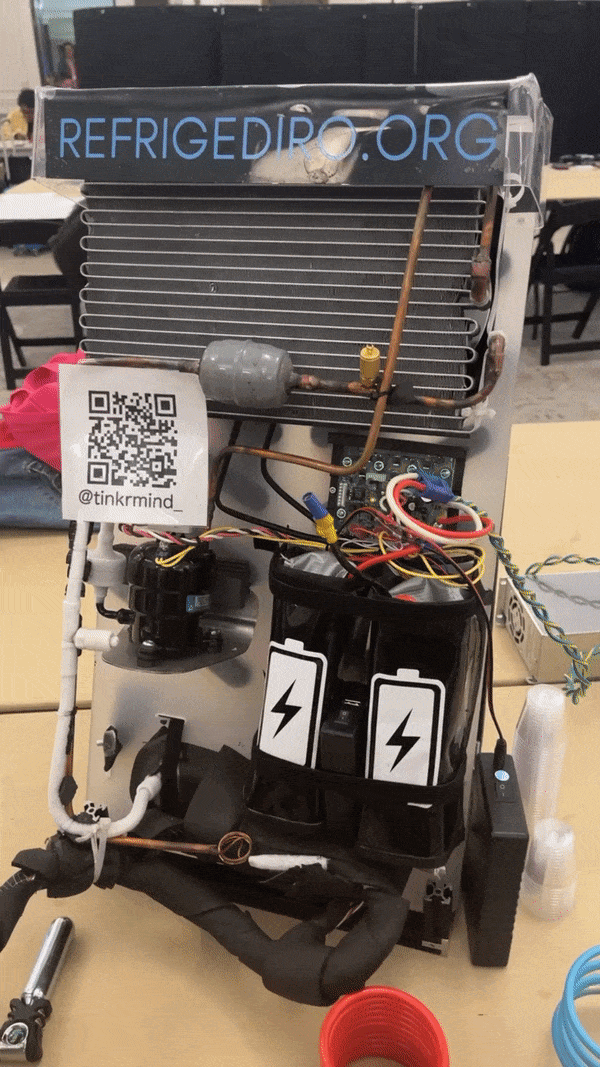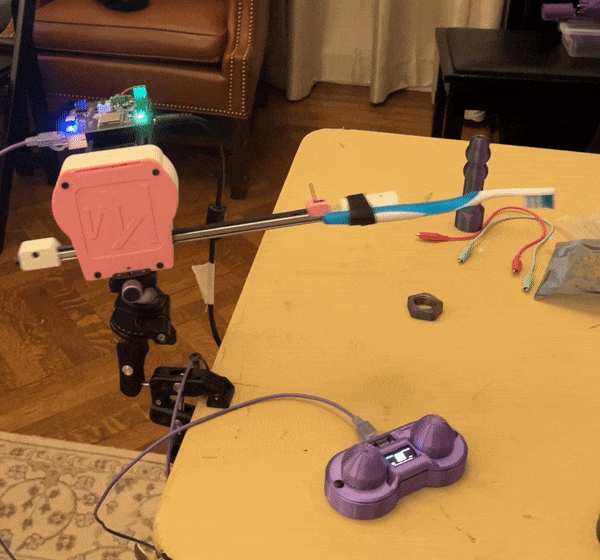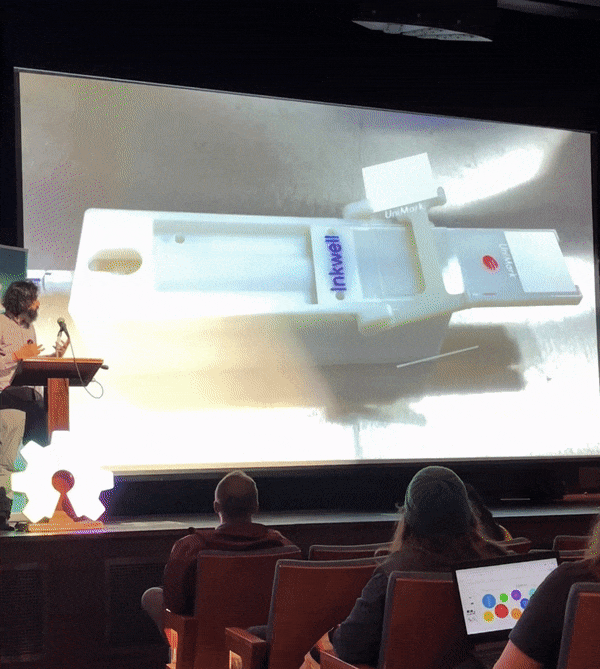This article was originally written for the SparkFun blog.
Yay Alicia Gibb!
I <3 Open Hardware
As a SparkFun alum I learned the importance of open source technologies early in my career. We all know that an electronic product is only as good as it’s documentation. Opening up hardware designs and source code makes technology more accessible to the general public and easier to use.
Even attending the Open Hardware Summit virtually in 2021 blew my mind; I learned so much about what was being achieved in my community. This year, I’m in New York working on getting my masters (hopefully) and my school hosted the OHS! I’m going to try my best to represent my experience, but … you kind of had to be there!
Demo tables, workshops, and speakers
@tinkrmind_’s Refrigediro, open source refrigeration backpack to cool drinks
Amy Wibowo’s personal computer design
Crowd Supply table
How Eduardo Contreras feels dealing with supply chain issues post-pandemic
OSSM open-stroke machine
Alexandra Covor’s Mini Electronic Violin
Participants at the “Feminist Approaches to DIY Radio” workshop
Speaker Highlights
Robotics for the Streets: Open-source robotics for academics and the community - Dr. Carlotta Berry
Dr. Carlotta Berry is the NoireSTEMinist. She has developed a line of low-cost build-your-own robot kits to educate and diversify the fields of electrical engineering and robotics. She’s been distributing them, along with tutorials in robotics concepts, amongst high schoolers, undergrads, and graduate students as a teaching tool aimed to get kids excited about STEM. Her “Flower-bots” come in three different flavors: Lily-bot, Daisy-bot, and Rosie-bot for different experience and/or interest levels.
How to DIY high-resolution flexible (and kirigami) circuits with a fiber laser engraver - Huaishu Peng
Dr. Huaishu Peng is a professor at the University of Maryland and leads the Small Artifacts Lab. They’ve been developing a process called Fibercuit for rapid prototyping of PCB designs. Using a standard fiber laser engraver they can cut separate PCB layers out of copper, solder SMD parts, and even score the metal to bend it and make 3D circuits! The goal of the Fibercuit process is to make prototyping PCBs as accessible and affordable as 3D printing and to generally democratize circuit making.
Kinetic Wearables Toolkit - Kate Hartman and Chris Luginbuhl
Kate and Chris are researchers at the Social Body Lab at OCADU where they explore body-centric technologies in the social context. Mounting servo motors on the body is really hard so they have developed the Kinetic Wearable Toolkit of modular and customizable mounts for different types of actuators. They considered wearability, choice of actuators, and attachment methods in the design of all the parts of this kit. I was really excited to see Kate’s talk because she actually taught my Textile Interfaces class at NYU!
Making Pretty PCBs for STEAM Outreach - Ayesha Iftiqhar
Ayesha is an engineer and skater based in Colorado and she designs the most beautiful PCBs! Her process consists of choosing from colorful solder masks, colored inks and custom graphics, and defining fun board shapes. There isn’t equal representation of gender, age, and race amongst PCB designers and so these funky circuit designs makes PCB design more fun and approachable to a wider range of people. She also noted that knowing how to design PCBs promotes self reliance, repair, and reduced E-waste.
Stealing Great Ideas from Software Engineering: Library-based PCB Design through Hardware Description Languages - Richard “Ducky” Lin
As I’m not a software engineer, I really needed to turn on my “big brain” for this talk, but I’ll try my best to give an overview because it was really interesting!
Richard Lin is a postdoc researcher at the LEMUR lab at UCLA. Library-based design is uncommon in the hardware world so he’s been working on a library to define hardware components in text to build full, working circuits. He ran a demo that built a mechanical keyboard circuit in three minutes. This kind of model for hardware design automates routine hardware checks and can mitigate common mistakes. For more info check out his lab’s site.
Frugal science: Tackling societal challenges with curiosity, openness and a little bit of play - Manu Prakash
3D printed, autonomous blood smearing device
Manu Prakash is a professor at Stanford University and runs the Prakash Lab for curiosity-driven science. He’s a champion of the “frugal science” philosophy in which his lab is developing tools to democratize access to science and to facilitate diagnostics under a tree. The image on the left defines all the physics involved in a button spinner toy, or Whirligig (look it up!), but in the field it’s used as an uncomplicated and affordable centrifuge to spin biological samples. He also described using a cotton candy machine to make menstrual pads and many other projects. It is really amazing seeing how these simple and cheap processes they’ve developed in his lab might impact global health issues!
Participants at the Bubble Punk workshop
Get Involved
I had so much fun at the open hardware summit! I learned so much and met so many cool people. I was pleasantly surprised to see a different demographic of speakers and attendees than I’m normally used to seeing in the hardware world.
Even though the summit is over, all the talks have been uploaded to YouTube for everyone to watch! Be sure to check out OSHWA’s site and consider getting your own projects Open Source Hardware Certified. And if you’re still curious what summit weekend was really like, you can check out my friend Josh’s TikTok!
















